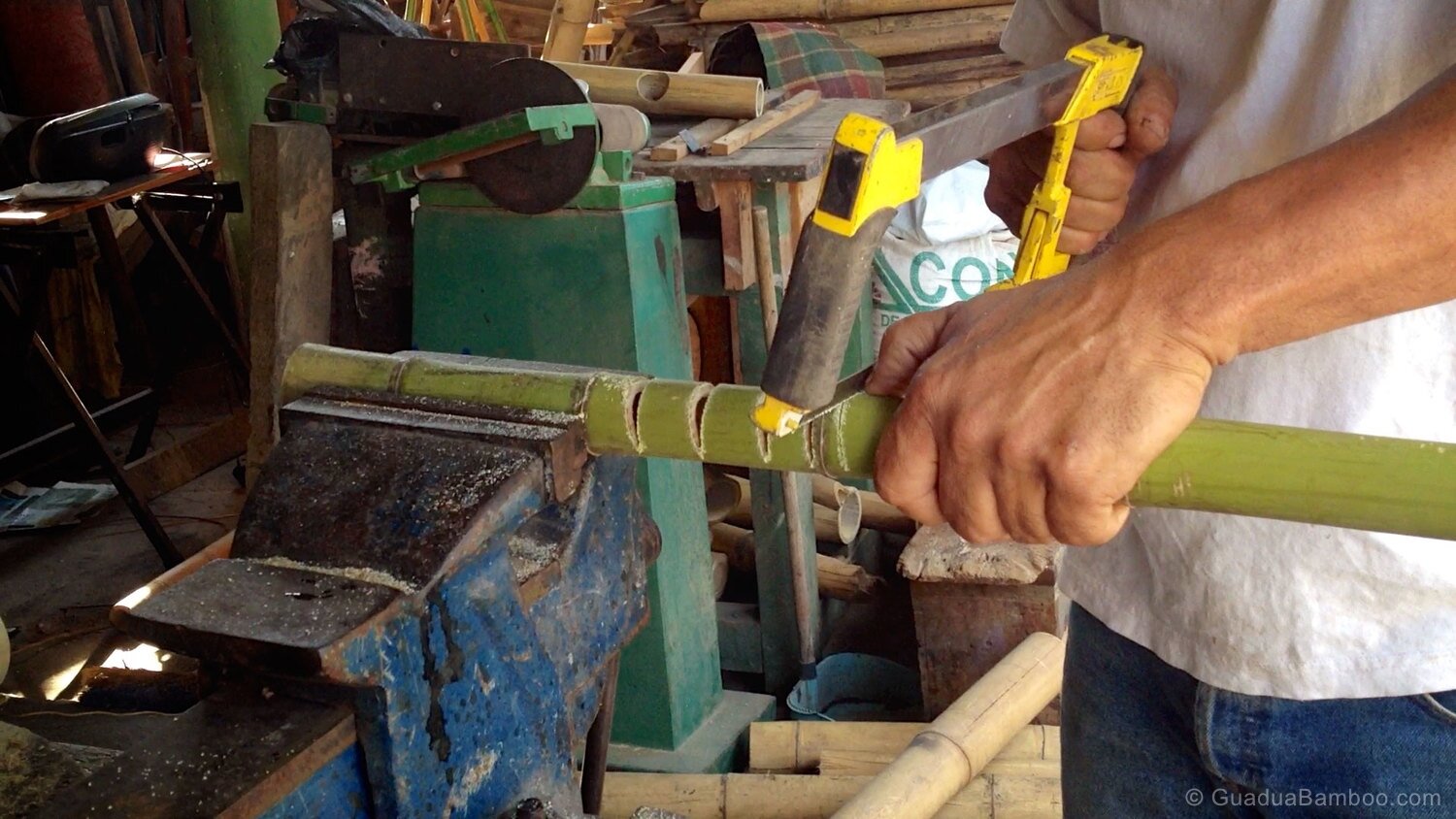
Working with Bamboo
Learn how to craft the perfect bamboo joint, how to split or bend bamboo poles and how to build your own bamboo furniture or musical instruments.
Check out our collection of articles and forum discussions about working with bamboo. Bamboo is a strong and versatile material with lots of possibilities for both experienced users and newcomers. Our website is a great place to learn about joining, bending, and splitting bamboo for all skill levels. Whether you want expert advice, tips, or a community of enthusiasts, our site is a valuable resource for exploring the creativity and possibilities of working with bamboo. Join us and discover the endless appeal of this amazing natural resource.
Bamboo rain gutters are a green alternative to metal and plastic gutters and are mostly used in areas where bamboo is abundantly available. Bamboo gutters are cheaper and provide a beautiful rustic appeal, but are less durable than conventional gutters.
In this DIY tutorial we'll show you how to make a bamboo chair with very basic hand tools and without the use of any metal nails or screws.
In this DIY tutorial we'll show you how to make a bamboo bed with very basic hand tools and without the use of any metal nails or screws.
Splitting bamboo poles, is another basic technique when working with bamboo. Split bamboo is often used in bamboo fences, wall decoration, furniture, etc. The applications are endless and it basically all depends on your own creativity.
Bending bamboo, isn't that difficult. In case of freshly cut, green bamboo you could even dry bamboo in a mold to adjust the shape, or by applying heat. However, once dry, bamboo cannot be bend anymore (in a permanent lasting shape that is), unless you apply a special technique that we explain in this article!
Although it is widely assumed that the original Australian aboriginal didgeridoos where made from termite hollowed eucalyptus wood, traditionally it is suggested that the first didgeridoos were in fact made from bamboo.
In 2010, the Larenstein University in The Netherlands performed an interesting study comparing mechanical properties of bamboo. Guadua and Moso, which are the best and most common bamboos for industrial processing, were used in this research report.
How to join bamboo and what are the best bamboo joints? Well first of, it is important to know a few basics principles about joining bamboo before discussing the different joinery techniques.
Forum Discussions
I have some hives of the sting-less bee Tetragonisca angustula. I now started researching D. Asper to build homes for this species and others of the sting-less bees. My question is which is the best method to dry the bamboo? Some people use torches to apply heat, etc...
Can dry bamboo be put into water for it to be able to bend? I am also building a grapevine trellis, am I able to cement the bamboo poles into the cement, would it last?
How do you find the maximum height of a bamboo arch if you know its length?
This video from the Technology Institute in Costa Rica shows a basic technique in bamboo construction: the bamboo fish mouth joint. Notice the backslash of the drill in the beginning of the video. Guadua bamboo is a thick walled timber species, so be careful when you try this at home!
I saw some info about creating strong bamboo joints when using Guadua in building construction, especially adding cement to the joints. I recall threaded rod and hardware being used, and possibly rebar as well. I would love to see more detailed info and/or videos about that.
I am working with others developing a new kind of town and it would be consonant with the sustainability goals of the project if bamboo could replace some or all of the steel rebars in the concrete construction planned for all the buildings in such towns. Is there any experience, research, testing, or certification of bamboo concrete reinforcement?
Do you have any ideas about setting free standing bamboo posts in or above the ground that's quick and easy?
I am using guadua as the corner posts for a pyramid. Any suggestions as to how to join these at the top would be greatly appreciated. We need to get the joint exactly right to ensure the energetics of the structure are correct.
Have you ever heard of, or experimented with “molding” guadua bamboo as it grows, to end up with a finished pole that has the exact shape you need?
Can bamboo be used as a water container? If it can, will it reduce the bamboo's lifetime?

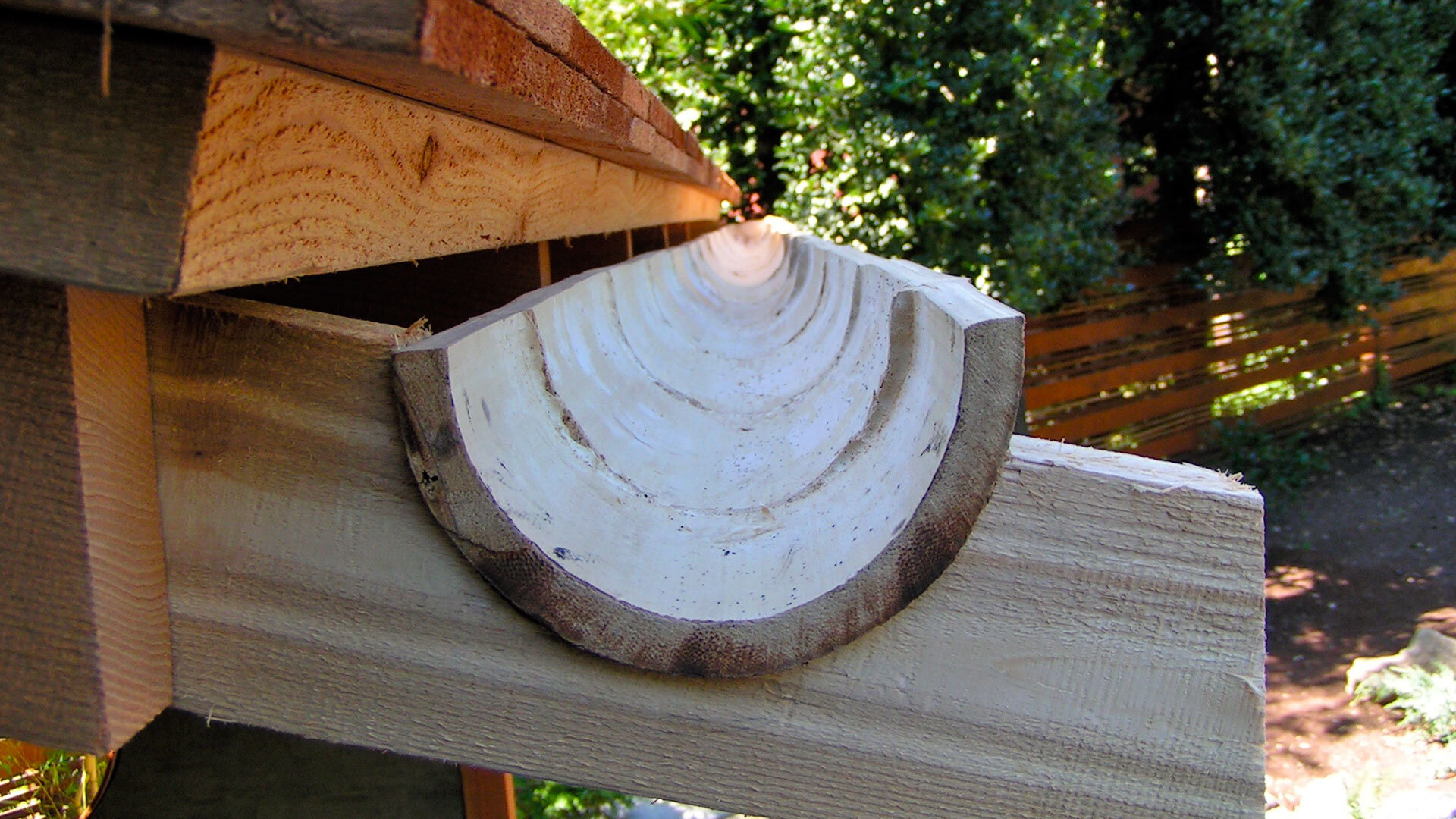
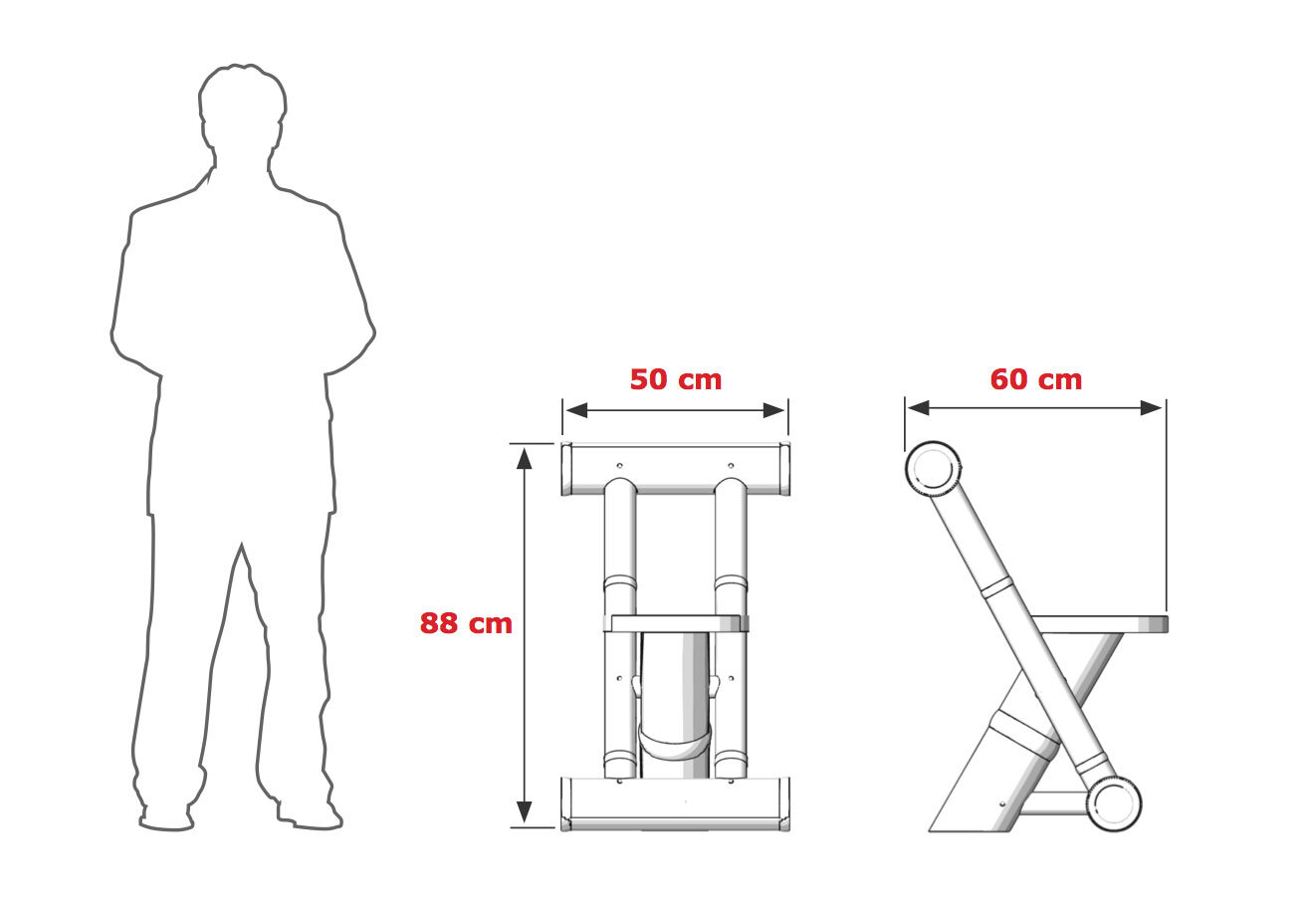
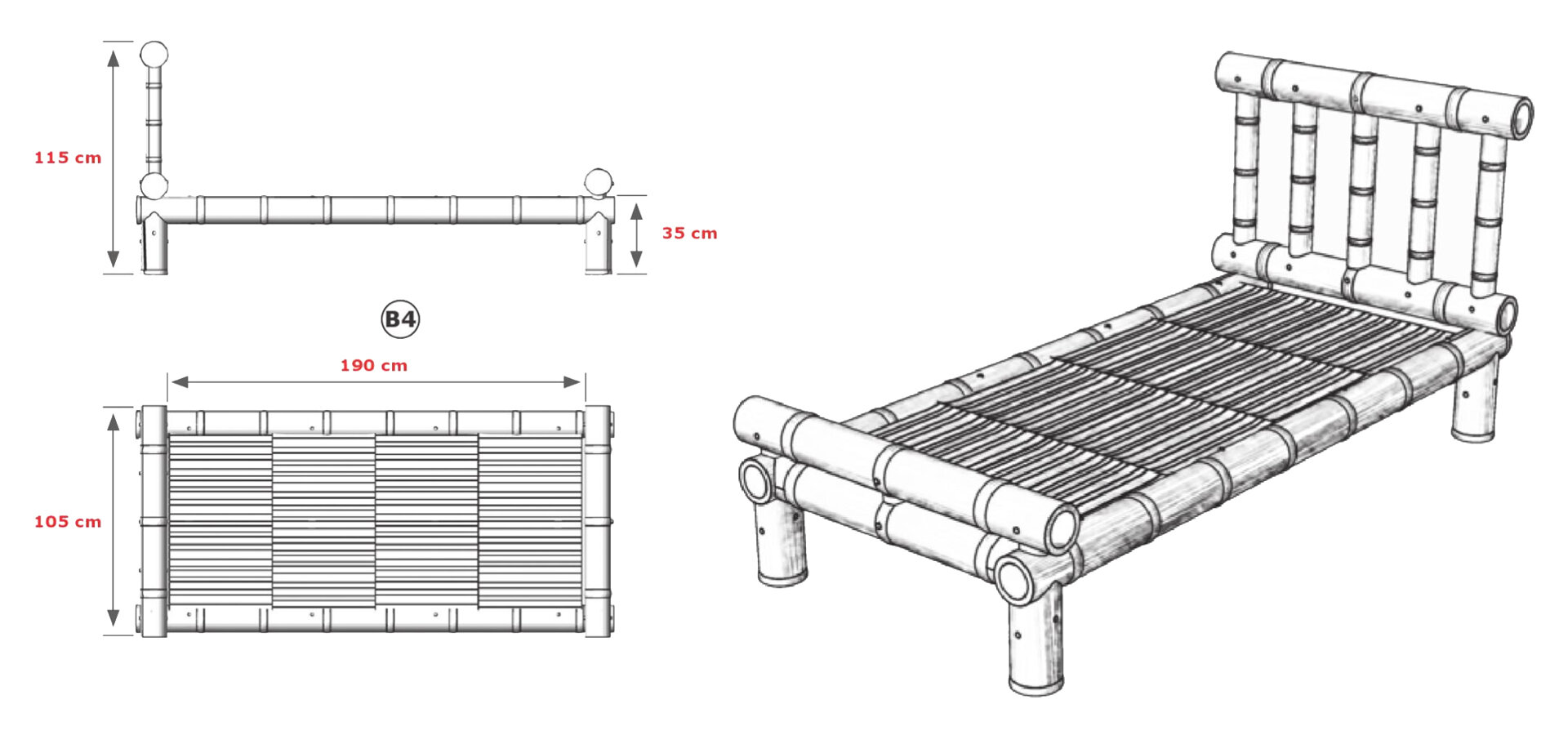
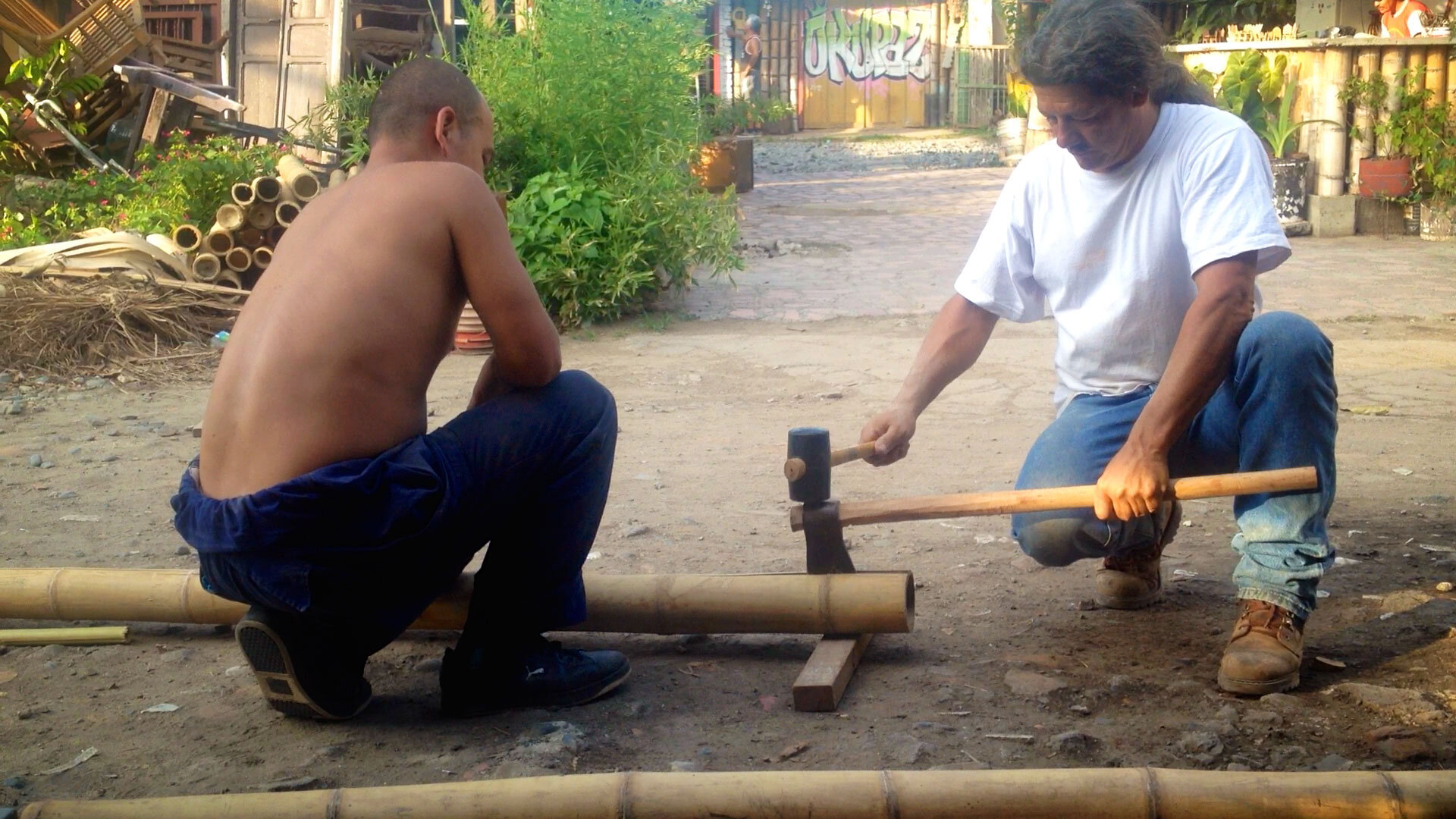


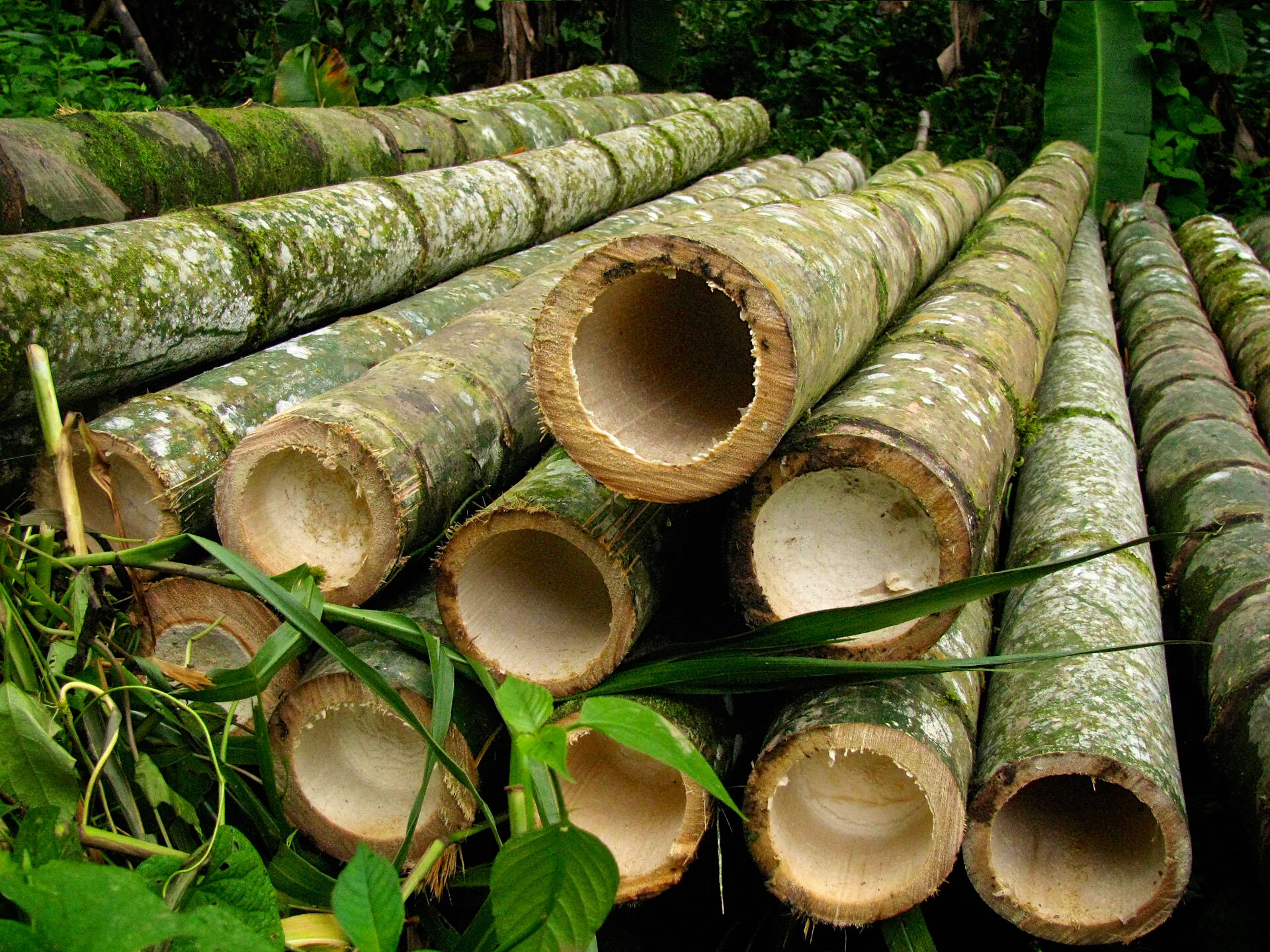
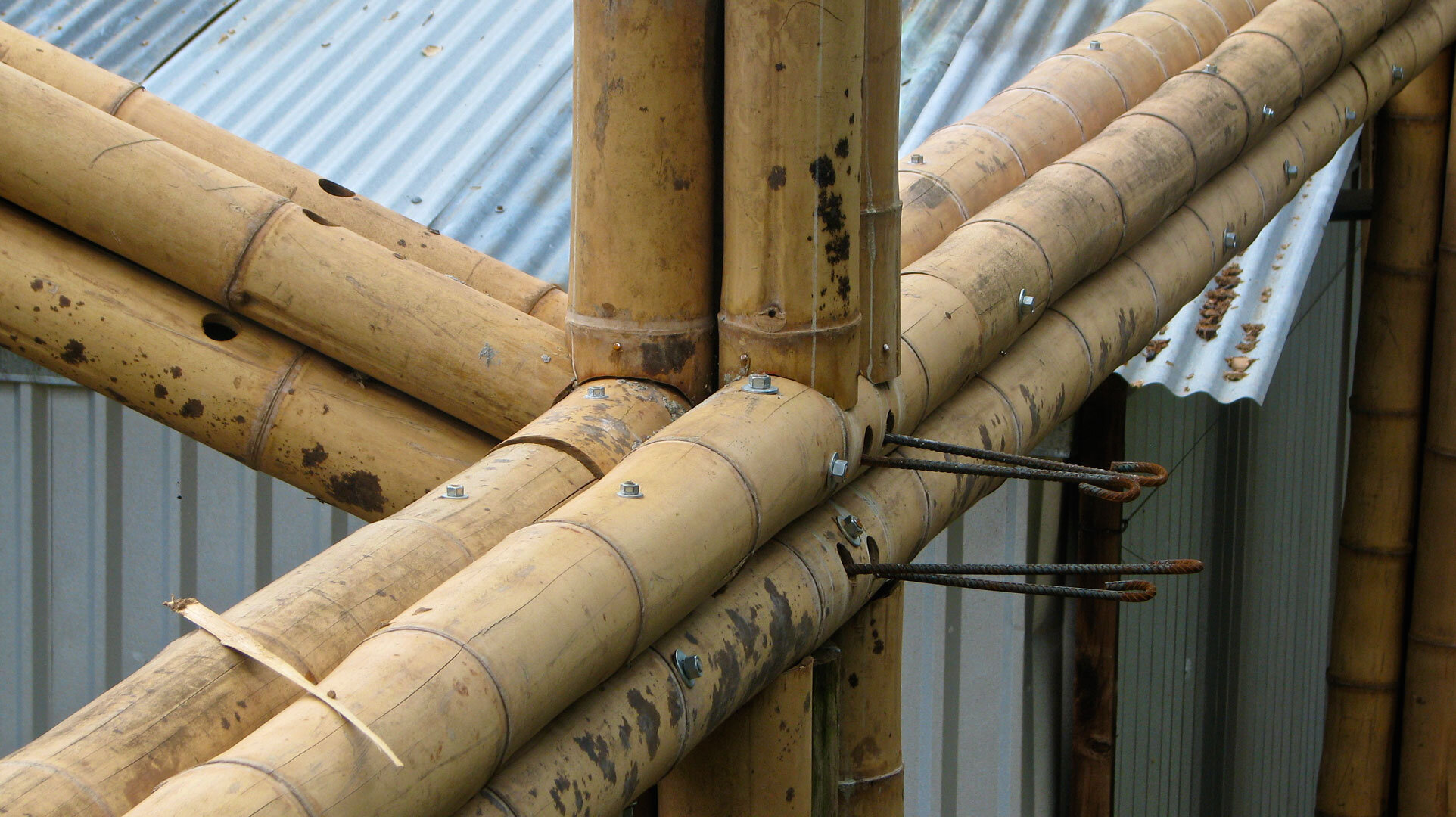
Bamboo is one of the most useful plants as it can be used to make houses, traps, cages, furniture, tools, weapons, bridges, rafts, towers, fences, water wheels, irrigation pipes, and thousands of other items. The challenge however, is learning how to connect those bamboo canes.